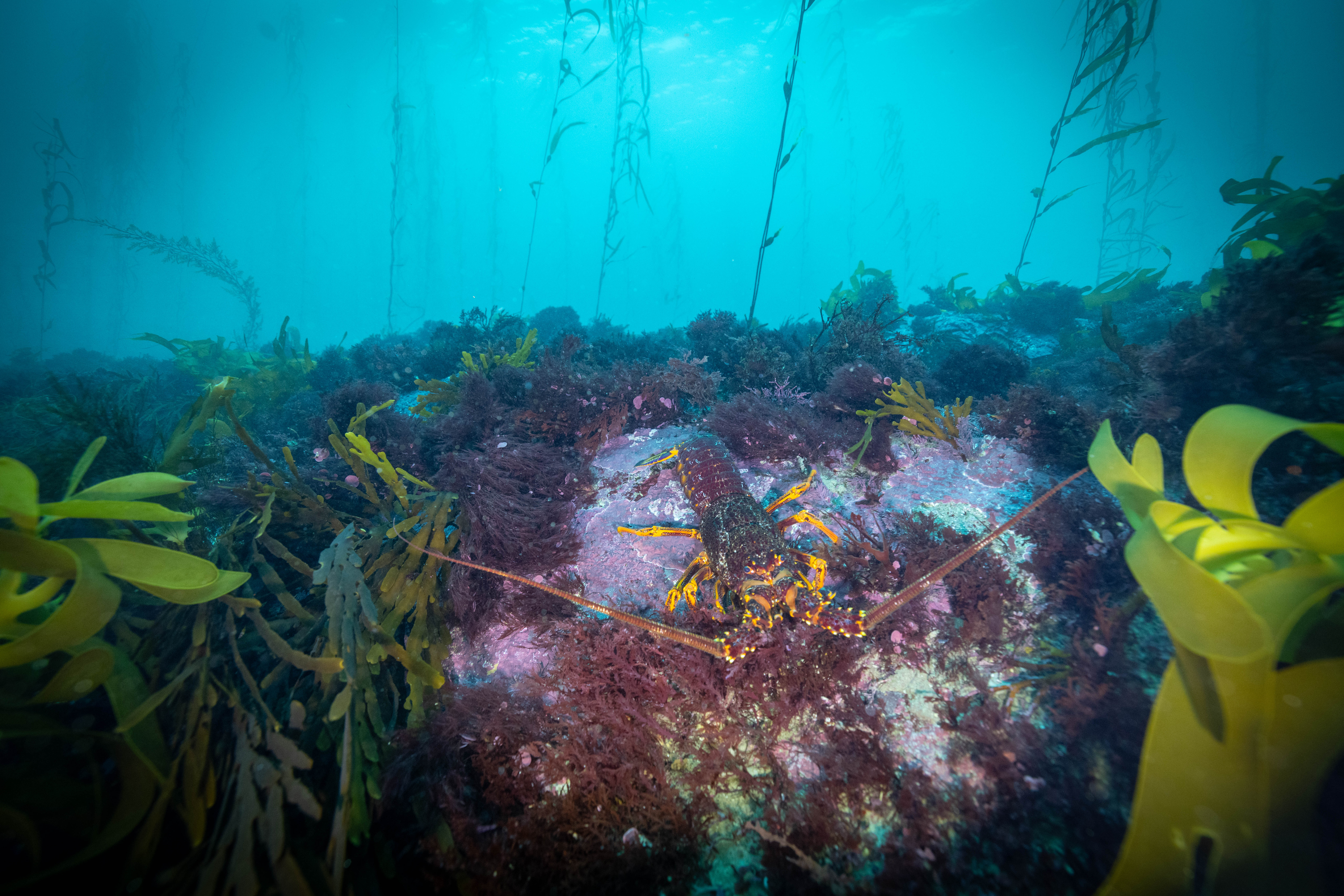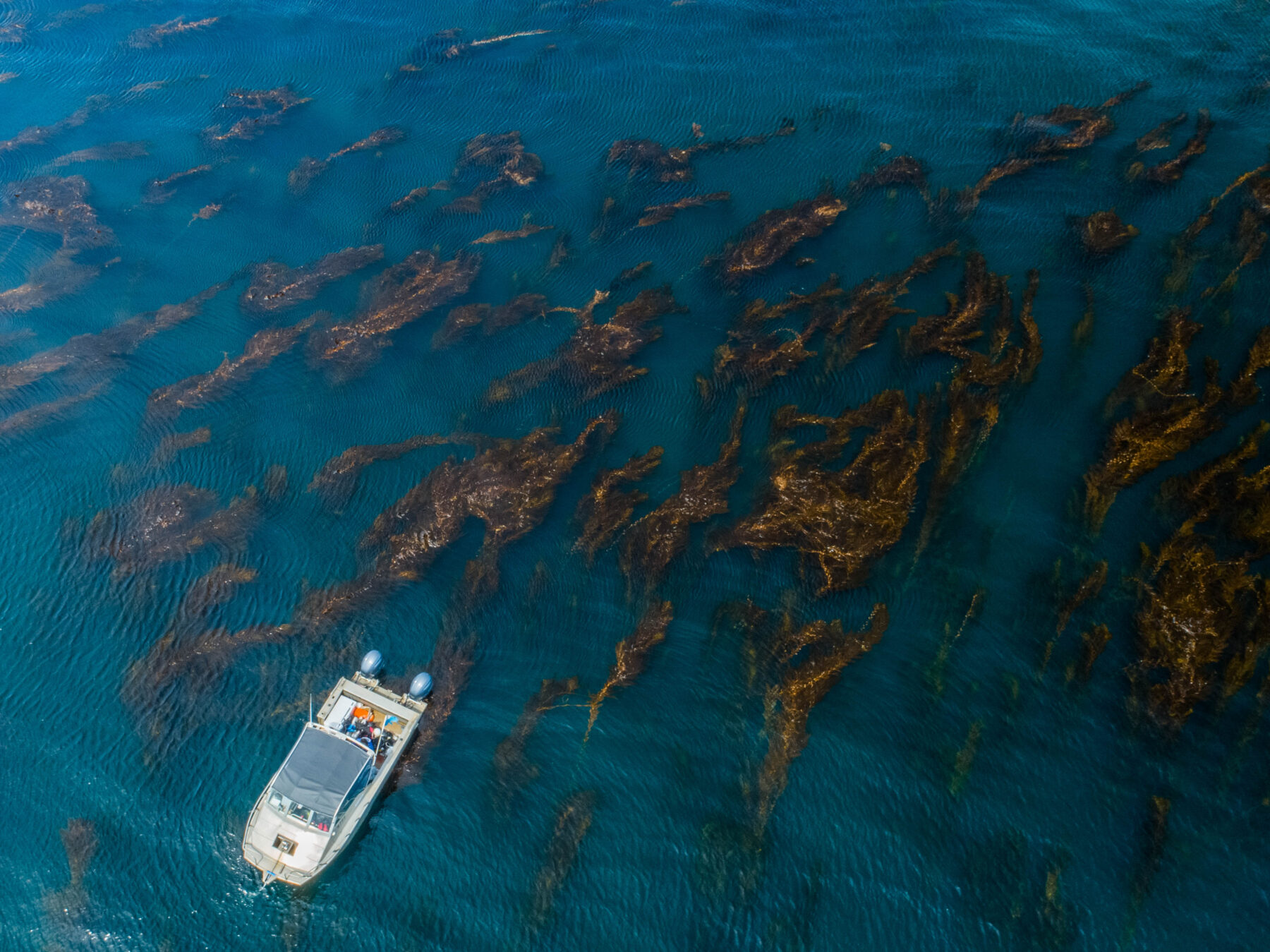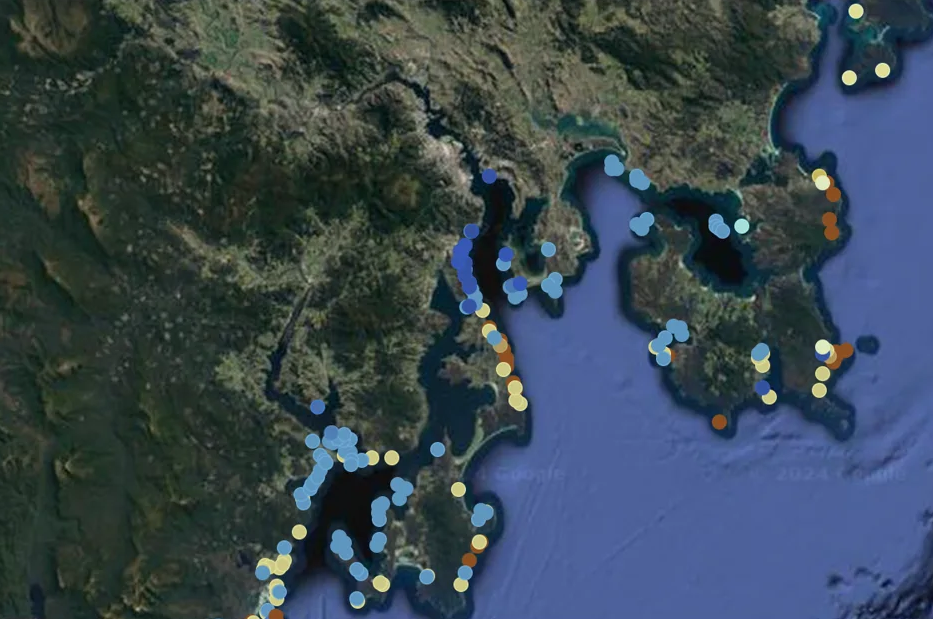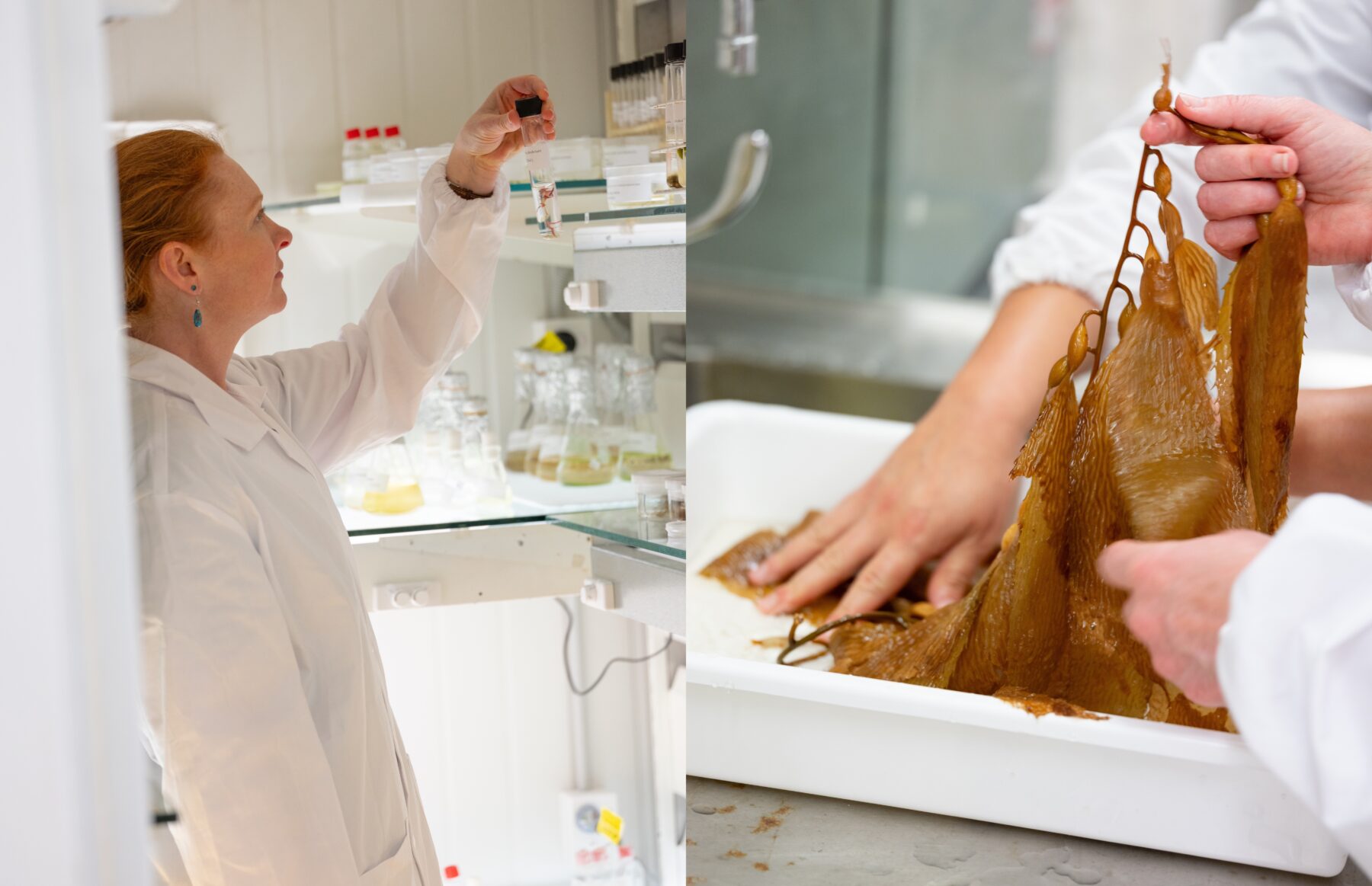The Great Southern Reef (GSR) is an intricate system of interconnected temperate rocky reefs, extending from Western Australia’s coast along the southern coast of continental Australia and lutruwita/Tasmania, to as far north as Brisbane to the east and Kalbarri to the west. It covers 71,000sq.km of ocean, meeting five states and running along the coast for 8000km.
It is also a global biodiversity hotspot. “There are more species in the GSR than anywhere else in the world,” says Dr Scott Bennett, a senior researcher and marine ecologist at Tasmania’s Institute for Marine and Antarctic Studies (IMAS) and co-founder of the Great Southern Reef Foundation (GSRF).
“Between 70 and 80 per cent of the thousands of species found in the GSR are unique to that reef, which is truly remarkable,” he says. “To put this into perspective, only 3 per cent of species in the Great Barrier Reef (GBR) are unique to the area.”
The GSR is also home to most Australians, with 70 per cent of the population living along its shores and many using it daily for swimming, surfing, fishing or other recreation.
It injects an average of $11.5 billion into the Australian economy each year, compared to the GBR’s average of $6 billion. However, due to a lack of awareness, the GSR receives only 1 per cent of the federal funding that the GBR receives each year.

Once a vast and productive ecosystem, the GSR is losing its most valuable asset – the Tasmanian giant kelp (Macrocystis pyrifera).
Giant kelp forests are vital to ocean productivity because, like land forests, they support a vast range of life. These undersea forests create a unique ecosystem that is home to some of the world’s rarest creatures, such as the weedy seadragon (Phyllopteryx taeniolatus), giant cuttlefish (Sepia apama) and Tasmania’s red handfish (Thymichthys politus).
Giant kelp forests were once superabundant throughout south-eastern Australia, leading to a hugely productive harvest industry in the early 1970s.
“Boats would go up and down the coast of Tasmania harvesting giant kelp, and harvesters removed hundreds of tonnes of biomass annually, but that wasn’t an issue because giant kelp forests are immensely productive,” says Dr Bennett.
For example, 1ha of giant kelp forest produces 1–2t of fresh kelp daily. In comparison, other kelp species – such as golden kelp (Ecklonia radiata) – that are now replacing the giant kelp produce an average of 70kg daily.

“It’s a massive difference in daily production, impacting the entire food web,” Dr Bennett says. “Going from 2t of fresh kelp daily to only 70kg is a huge loss, and these other kelp species simply cannot sustain the same amount of life as giant kelp forests.”
Once a vast and thick underwater forest, only 5 per cent of giant kelp forests remain. “We attribute this loss to climate change,” says Dr Bennett.
Because of shifts in wind and ocean circulation patterns, caused by warming water, the East Australian Current is getting stronger. It’s sending warm, nutrient-poor water further south than it previously did, displacing the cool, nutrient-rich water from the Southern Ocean.
“Giant kelp grows so fast and is so productive that it needs all this energy to grow, and if the nutrients aren’t in the water column, it doesn’t have the necessary fuel. The kelp is starving – it’s literally wilting off at the root,” Dr Bennett says.
Climate change is also causing the redistribution of some ocean species, proving dire for ecosystems like the GSR.
“The long-spined sea urchin (Diadema savignyi), which is native to New South Wales, is now found in Tasmania, and it is devastating kelp forests because the large populations overgraze,” Dr Bennett says. “The result is barren areas of bare rock where the urchins have destroyed giant kelp forests by nipping kelp off at its start, and the rest of the kelp floats away.”
Without giant kelp forests, the GSR will be unable to sustain the enormous biodiversity it has maintained for millions of years.
Using AI to track restoration
Scientists must be able to locate remaining canopies before the giant kelp forests can be protected and restored. Manually identifying and tracking canopies can be challenging, costly and cumbersome – imagine trying to identify a particular tree in 70,000sq.km of forest that is also underwater.
Google Earth Engine and Google Cloud’s AI platform, Vertex AI, are being used to locate and analyse kelp forests in more than 7000sq.km of satellite imagery to provide researchers with geospatial maps of the reef ecosystems, allowing them to document how they change yearly.

The AI kelp monitoring provides a complete picture of these ecosystems so researchers can create an efficient and reliable long-term monitoring strategy.
“To address the biggest challenges of climate change, we need to fully understand them,” says Melanie Silva, Managing Director of Google Australia and New Zealand.
“Using Google AI for this project we can – for the first time – find and analyse Australia’s disappearing giant kelp forests and support our partners to restore this critical habitat and protect the ecosystem of the GSR.”
Providing a ‘kelping’ hand
Although 95 per cent of giant kelp forests are gone, all hope has not been lost.
Dr Anusuya Willis, director of the Australian National Algae Culture Collection at CSIRO, is analysing the surviving giant kelp to uncover genetic patterns leading to heat tolerance.
“Some of the remaining kelp is showing resilience to heat waves, so those populations should be able to survive in the oceans as they are now,” Dr Willis says.
“By identifying the specific genetic patterns that make some kelp resistant to heat, we can take significant steps towards restoring our magnificent kelp forests by allowing scientists to grow these varieties and reintroduce them to the GSR.”

With 500 million base pairs of kelp to analyse, Dr Willis’s team is using Google AI to uncover patterns in their data.
The tool DeepConsensus helps enable genome sequencing data by spotting errors through multiple readings – something that would take humans much longer to achieve given the millions of data points.
Another tool, DeepVariant, then analyses the data and identifies any inconsistencies that may allow scientists to find the genetic abnormalities that result in heat resistance.
At the IMAS laboratory, scientists then take the giant kelp that demonstrate heat tolerance and breed it for out-planting on the GSR.
When selected baby giant kelp is ready to be seeded in the ocean, divers spray twine with fertilised kelp spores and unravel it along the seafloor, where it begins growing.
The baby kelp goes into the ocean measuring 1mm, but with a growing rate of up to 50cm per day in ideal conditions, the restoration efforts could see the establishment of ‘forest-scale’ giant kelp within 12 months of out-planting if the samples demonstrate heat tolerance.
Craig Johnson, Professor of Marine Ecology at IMAS, says the rest of the world is watching Australia closely to see how restoration progresses.
“Warming in eastern Tasmania is four times the global average rate, so the impacts here are a bellwether warning for what might occur in other parts of the world,” he says.
“So there’s a lot of interest in little old Tassie right now, because of the amount of science being done here around what may become a global issue.”






